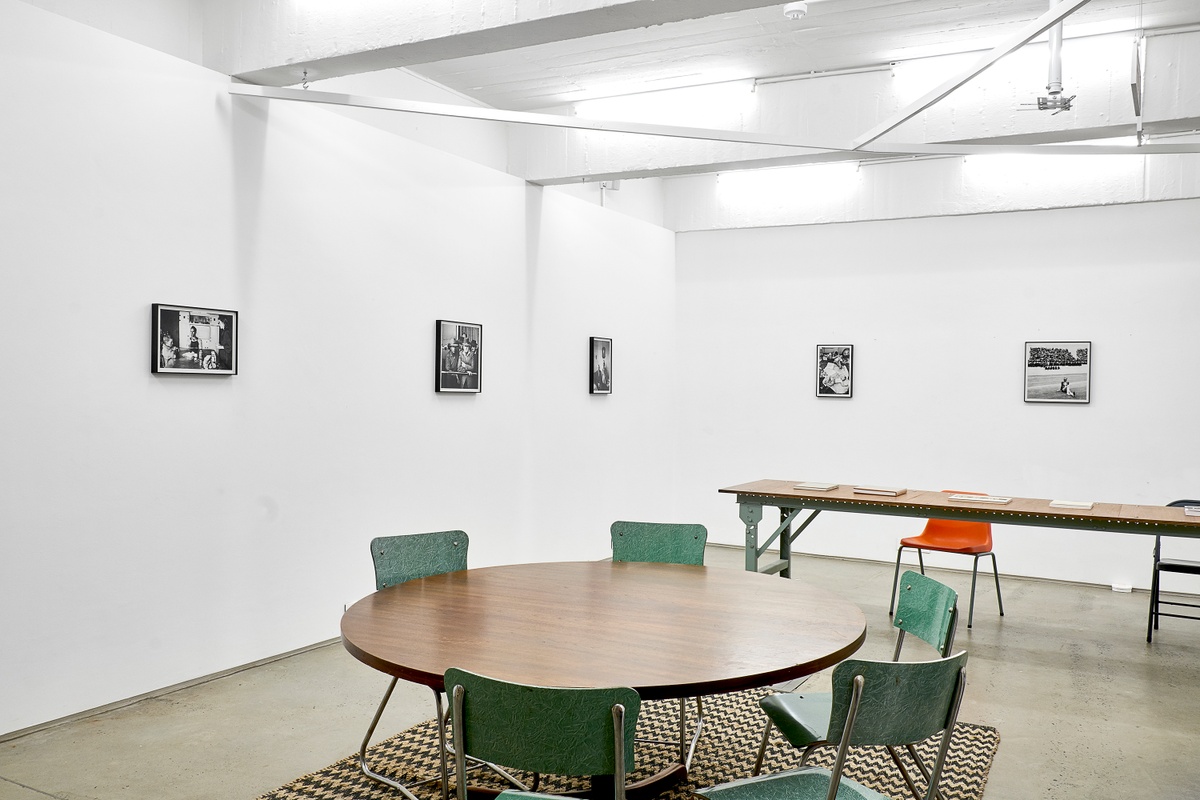David Goldblatt

“Johannesburg is a fragmented city,” Goldblatt wrote. “It is not a place of smoothly integrated parts.” Indeed, Johannesburg was fragmented not by chance but by design, in a policy of segregation and discrimination. Spatial apartheid – the classification of certain areas for different races – shaped the city and gave form to its landscape. In 1930, a black area was established outside Johannesburg, so that the white city might have a convenient and concentrated labour force. The area later became known as Soweto – the South Western Township – a sprawling suburb of small government-built houses and informal settlements.
Goldblatt’s Drum majorette, Cup final was photographed at a soccer match at the Orlando Stadium in Soweto. To the photographer, the image was one of palpable testosterone; a wall of men rising above the single drum majorette in the foreground. The place, however, would later earn historic significance. In 1976, four years after this image was taken, the children of Soweto rose up in protest against Afrikaans as the medium of instruction in schools. The students’ march was intended to culminate at the Orlando Stadium, but before they could reach it, police opened fire, killing and wounding hundreds of children.
This photograph is included in Fifty-one Years, 2001; Kith Kin & Khaya, 2011; TJ, 2011; Structures of Dominion and Democracy, 2018; and On Common Ground, 2018.
b.1930, Randfontein; d.2018, Johannesburg
“I was drawn,” the late photographer David Goldblatt wrote, “not to the events of the time but to the quiet and commonplace where nothing ‘happened’ and yet all was contained and immanent.” A preeminent chronicler of South African life under apartheid and after, Goldblatt bore witness to how this life is written on the land, in its structures or their absence. Unconcerned with documenting significant historic moments, his photographs stand outside the events of the time and yet are eloquent of them. Through Goldblatt’s lens, the prosaic reveals a telling poignancy. Even in those images that appear benign, much is latent in them – histories and politics, desires and dread. His photographs are quietly critical reflections on the values and conditions that have shaped the country; those structures both ideological and tangible. Among his most notable photobooks are On the Mines (1973), Some Afrikaners Photographed (1975), In Boksburg (1982), The Structure of Things Then (1998), and Particulars (2003).

